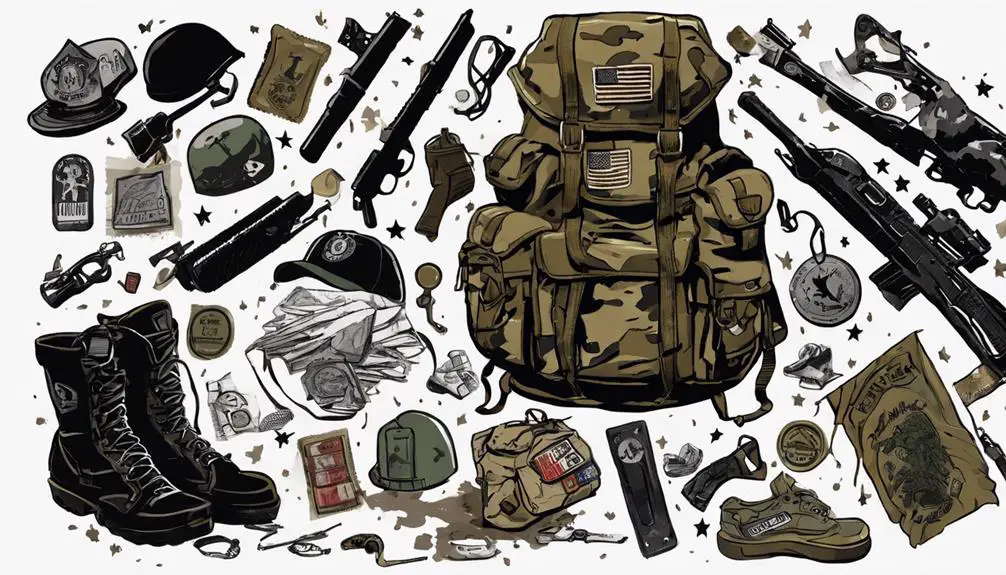When you're in the military, your gear is your lifeline. You'll hear your tactical gear referred to as 'kit' or 'saddle,' and your rifle or sidearm called your 'primary' or 'personal weapon.' Understanding this unique slang is vital on the battlefield. Your gear can make or break your mission, so it's important to know the lingo. From 'chow' (field rations) to body armor, each piece of gear has its own nickname. And, knowing the difference between 'soft' and 'hard' armor can be a matter of life and death. Dig in, and you'll discover the nuances of military gear that'll keep you ahead of the game.
Rifles and Sidearms
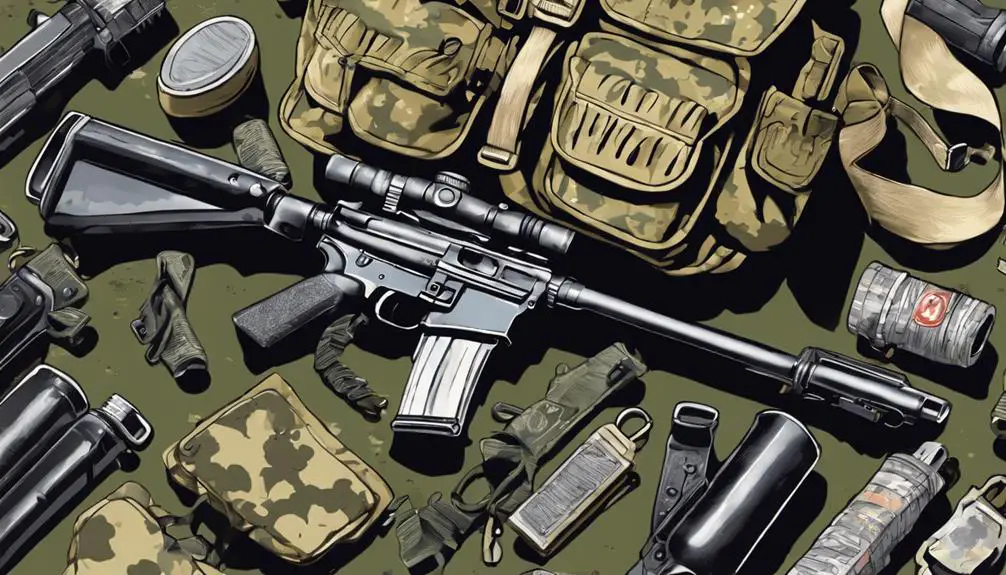
When you're issued a rifle or sidearm, you'll hear terms like 'weapon' or 'piece' used interchangeably to refer to these firearms. This slang is deeply ingrained in military culture, and understanding it is essential for effective communication. Your rifle or sidearm is often referred to as your 'primary' or 'personal weapon,' emphasizing its importance as a crucial tool in combat.
Firearm customization is also a common aspect of military culture. You may hear fellow soldiers discussing their preferred rifle accessories, such as scopes, grips, or magazines. These customizations can greatly impact the performance and accuracy of your weapon, making it an essential aspect of military training.
In the military, you'll often be responsible for maintaining and modifying your own weapon. This can include tasks like cleaning, lubricating, and zeroing your rifle, as well as installing or adjusting accessories. Familiarizing yourself with these processes will help you become more proficient with your weapon and better equipped to handle various combat scenarios.
Battlefield Communications
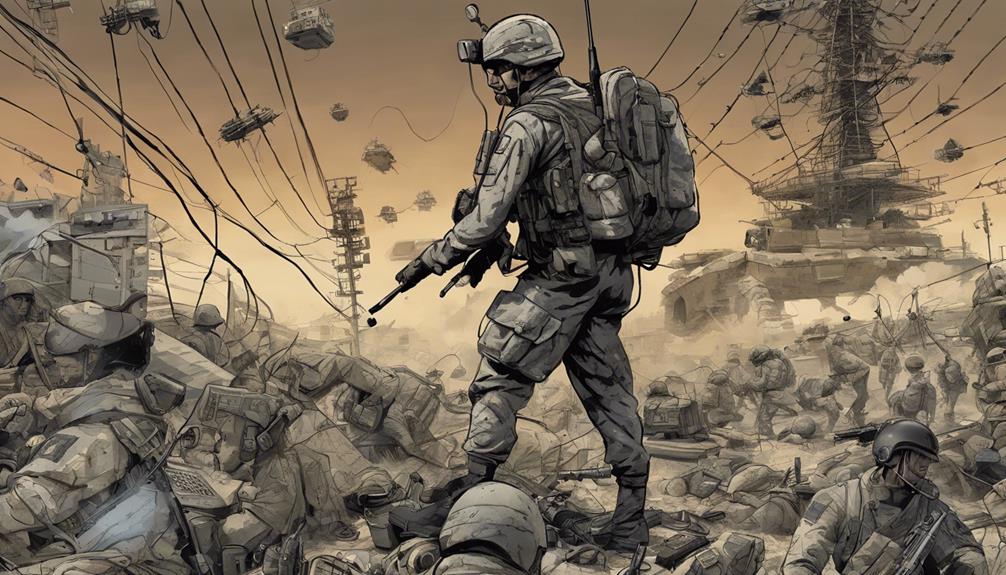
You'll soon realize that clear and concise communication is important on the battlefield, where misunderstandings can have devastating consequences. Effective communication is key to achieving your mission objectives and staying safe. That's why a Radio Check is necessary before heading out on patrol. It guarantees that your comms equipment is functioning properly, and you can receive and transmit important information to your team and command center.
In the heat of battle, it's easy to get tunnel vision and focus on your immediate surroundings. However, maintaining Situational Awareness is essential to staying alive. This means constantly monitoring your surroundings, tracking the movement of friendly and hostile forces, and adjusting your plan accordingly. By staying informed and adapting to changing circumstances, you can make better decisions and stay one step ahead of the enemy.
Tactical Vehicles and Gear
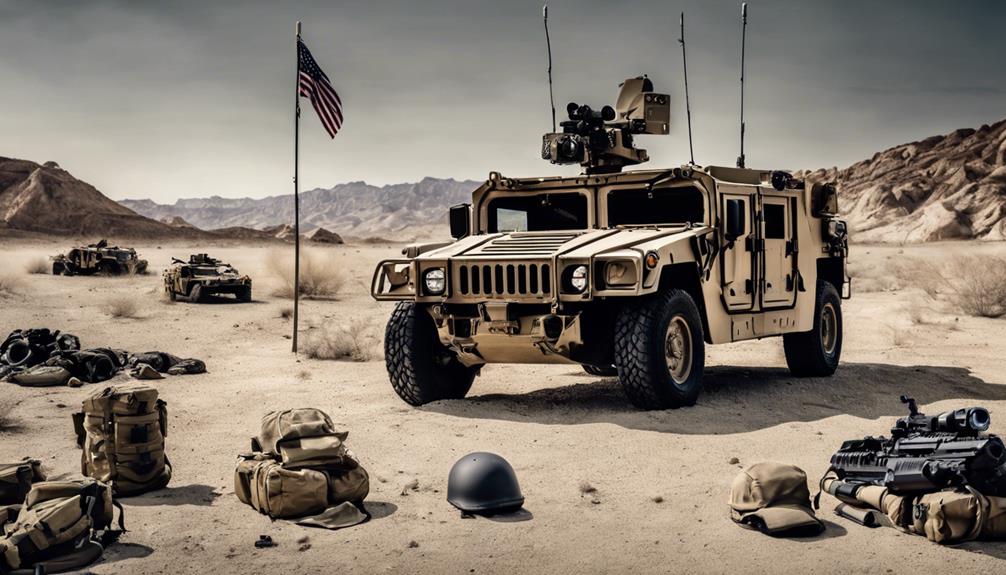
Your tactical gear is your lifeline on the battlefield, and knowing your equipment inside and out is essential to staying alive. When it comes to tactical vehicles and gear, you need to be familiar with the terminology to guarantee seamless communication with your team. Tactical mobility refers to the ability to move quickly and efficiently on the battlefield, and it's vital to understand the capabilities of your vehicles. You'll need to know the differences between a Humvee and a MRAP, and how to utilize them for best tactical mobility.
Vehicle camouflage is also essential, as it helps you blend in with your surroundings and avoid detection. You'll need to know how to apply camouflage paint and netting to your vehicles, as well as how to use natural cover to your advantage. Understanding these concepts is critical to staying one step ahead of the enemy and completing your mission successfully. Remember, your gear is only as good as your knowledge of how to use it. Stay sharp, stay informed, and you'll be more effective on the battlefield.
Aerial Support and Surveillance

Aerial support and surveillance are essential components of modern warfare, providing indispensable intel and firepower to gain a tactical advantage on the battlefield. You're likely familiar with the concept of aerial reconnaissance, where aircraft or drones gather intel on enemy positions, movements, and capabilities. This intel is pivotal in planning and executing operations. Drone surveillance is a key aspect of aerial support, allowing you to monitor areas of interest without risking human lives. These drones can stay aloft for extended periods, providing real-time video feeds and sensor data. You'll often hear military personnel refer to these assets as 'eyes in the sky,' highlighting their importance in gathering critical information. By leveraging aerial support and surveillance, you can gain a decisive edge on the battlefield, making informed decisions and executing missions with precision and accuracy.
Field Rations and Supplies
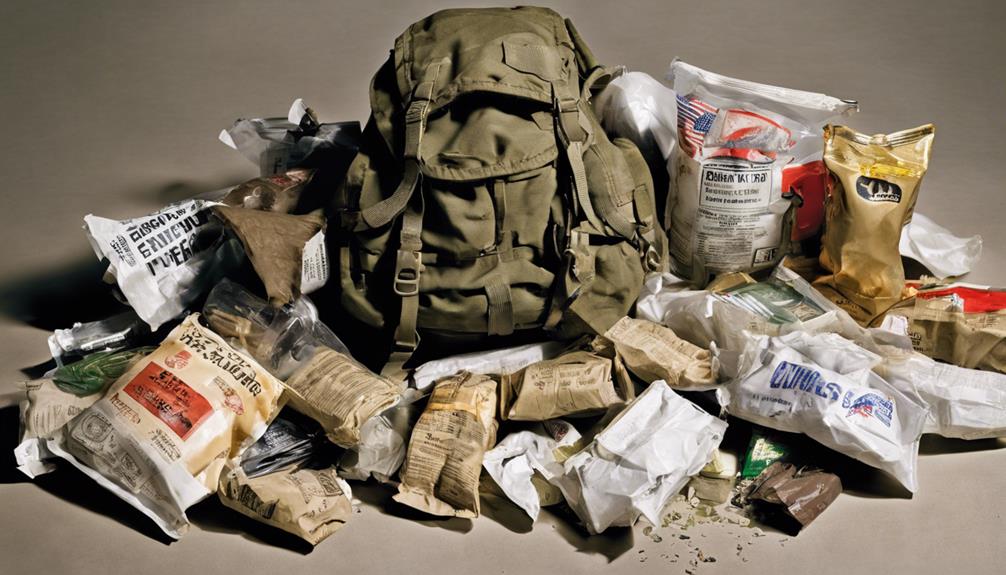
When you're deployed in the field, your survival depends on access to reliable field rations and supplies that can sustain you for extended periods. You'll rely on these essentials to fuel your body and maintain your energy levels. In the military, field rations are often referred to as "chow." You'll typically receive pre-cooked, pre-packaged meals known as Meals, Ready-to-Eat (MREs) or Unitized Group Rations (UGRs). These rations are designed to be lightweight, nutritious, and easy to prepare.
To prepare your meals, you'll use a Mess Kit, a portable cooking set that includes a pot, pan, and utensils. When you're not in the field, you'll likely eat at a Chow Hall, a communal dining facility that provides hot meals and a place to socialize with fellow service members. Other essential supplies include water purification tablets, water bottles, and first aid kits. Having access to these basic necessities is critical to your survival and success in the field.
Protective Gear and Armor
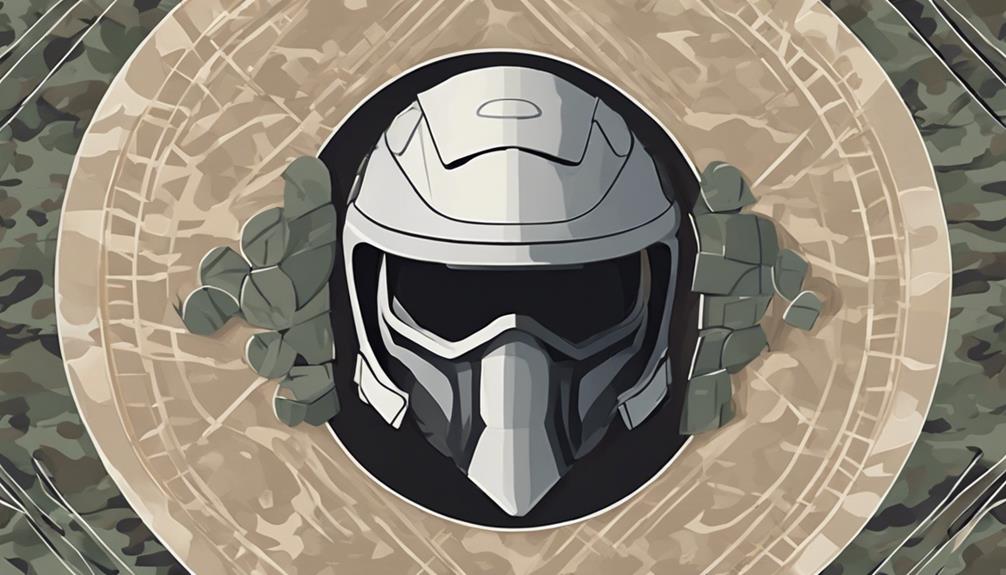
In combat zones, you'll don protective gear and armor, including helmets, vests, and goggles, to shield yourself from ballistic threats and harsh environmental conditions. This gear is essential for survival, and you'll need to get familiar with it fast. Body armor, in particular, is a key component of your protective gear. It's designed to absorb or deflect ballistic threats, and it comes in different types, including soft armor and hard armor. Soft armor is lightweight and flexible, making it ideal for everyday wear, while hard armor is more robust and used for high-risk missions.
Helmet designs have also evolved to provide better protection. Modern helmets are made from advanced materials that provide enhanced protection against ballistic threats. They're also designed to be comfortable and ergonomic, allowing you to focus on the mission at hand. Goggles, too, are essential for protecting your eyes from debris and harsh environmental conditions. When combined, these protective gear and armor provide a complete shield against harm, giving you the confidence to operate in high-threat environments.
Frequently Asked Questions
What Is the Most Common Slang Term for a Military Backpack?
You're wondering what the most common slang term for a military backpack is. Well, you'll often hear soldiers refer to it as a Ruck sack. This term is commonly used in the military to describe a backpack, especially when it's heavily loaded with gear. You might also hear it called a Backpack radio, although this term is less common. Regardless, the Ruck sack is the go-to term for military personnel when referring to their trusty backpacks.
Can Civilians Purchase Military-Grade Equipment Online Legally?
You're diving into the world of online marketplaces, where the waters can get murky. Can you legally purchase military-grade equipment online as a civilian? The answer is yes, but with caveats. Online marketplaces have varying regulations, and export control restrictions apply to certain items. You'll need to navigate these restrictions and make sure you're buying from authorized dealers to avoid legal issues. Be cautious and do your research to avoid getting swept under.
How Do Soldiers Typically Abbreviate "Situation Report" in Radio Chatter?
When you're listening to radio chatter, you'll often hear soldiers abbreviate 'situation report' as 'SITREP' to guarantee clarity and follow strict voice procedure protocols. This concise terminology helps secure efficient communication, especially in high-stress situations. By using SITREP, soldiers can quickly convey critical information without compromising radio chatter clarity, adhering to established protocols that prioritize brevity and accuracy.
Are Military-Issue Flashlights Always More Durable Than Commercial Ones?
You're wondering if military-issue flashlights are always more durable than commercial ones. The answer lies in the rigorous testing they undergo. Torch durability tests, for instance, simulate extreme conditions like drops, vibrations, and temperature fluctuations. Ruggedized flashlight standards guarantee they can withstand harsh environments. While commercial flashlights may not meet these standards, some high-end brands do offer similar durability. However, military-issue flashlights are generally built to last longer and perform better in extreme conditions.
Do All Military Branches Use the Same Slang for "Enemy Position"?
You might assume that all military branches use the same slang for "enemy position," but the reality is more complex. In tactical ops lingo, each branch has its own unique terminology, shaped by their specific threat assessment protocols. While there may be some overlap, there's no universal slang term used across all branches. You'll find that the Army, Navy, Air Force, and Marines each have their own distinct language when referring to enemy positions.

